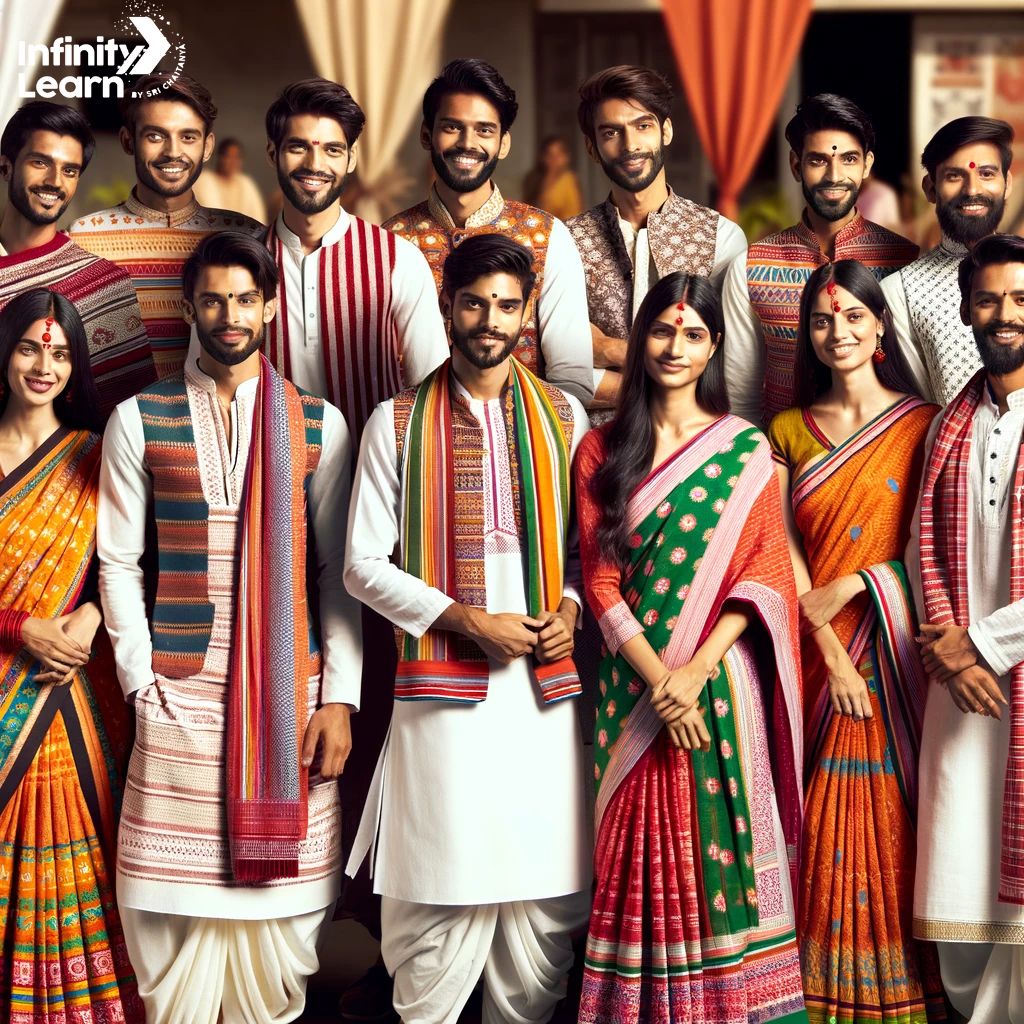Table of Contents
Traditional Dress of Bihar
Bihar, a state in India, is famous for its rich culture and heritage. A significant part of this culture is the traditional clothing worn by its residents. These outfits are not just garments, but they also carry stories about Bihar’s history and customs. Men and women in Bihar wear different types of attire, each with its own unique beauty and importance. These clothes are often bright and carefully crafted, showcasing the artistic talents of the local people. In this introduction, we will explore the various traditional outfits of Bihar and what makes them special.
Bihar Traditional Dress Name
The Bihar traditional dress name is different for men and women, are deeply tied to the state’s cultural fabric. Here are the names of cultural Bihar traditional dress for man and women:
Bihar Traditional Dress for Man
These are the name of Bihar traditional dress for man:
- Dhoti Mirjai
- Kurta and Pyjama
- Sherwani
- Gamchha
Bihar Traditional Dress for Women
These are the Bihar traditional dress female name:
- Tussar Silk Saree
- Seedha Anchal Style Saree
- Ghagra Choli
- Lehenga
- Dhoti Mirjai
Cultural Bihar Traditional Dress Images
These traditional Dress of Bihar images shoe the culture and customs of Bihar trough its tradition dress

Bihar Traditional Dress Male and Female
| Bihar Traditional Dress Male | Bihar Traditional Dress Female |
|---|---|
| Dhoti | Saree |
| Kurta | Salwar Kameez |
| Gamchha | Lehenga |
| Pajama | Churidar |
Bihar State Traditional Dress in Detail
Below is the detailed explanation about cultural Bihar traditional dress for male and female and their signification:
Bihar Traditional Dress Female
Tussar Silk Saree
Tussar Silk Sarees are a specialty of Bihar, known for their unique texture and natural gold color. They are crafted from silk produced by the Tussar silk worm and are valued for their rich texture and natural, earthy tones.
Seedha Anchal Style Saree
This style of draping a saree is common in Bihar. In the Seedha Anchal style, the pallu (the decorative end of the saree) is draped over the right shoulder instead of the left. This style is not only elegant but also allows for easy movement, making it functional for daily wear.
Ghagra Choli
Ghagra Choli, also known in Bihar as Lehenga Choli, is a traditional outfit worn by women, especially during festivals and weddings. It consists of a long, flared skirt (ghagra), a fitted blouse (choli), and is often accompanied by a dupatta.
Lehenga
Similar to the Ghagra Choli, a Lehenga is a traditional full-length skirt worn by women. It’s usually intricately embroidered and is paired with a matching choli and dupatta. In Bihar, Lehengas are popular for bridal wear and special occasions.
Bihar Traditional Dress Male
Dhoti Mirjai
The Dhoti Mirjai is a classic attire for men in Bihar. A dhoti is a long piece of cloth wrapped around the waist and legs, typically white or cream in color, signifying simplicity and elegance. ‘Mirjai’ refers to the upper garment, similar to a jacket, worn over the dhoti. This combination is often worn during traditional ceremonies and religious events.
Kurta and Pyjama
Kurta and Pyjama are common traditional wear for men in Bihar. The kurta is a long shirt, reaching either just above or below the knees, while the pyjama is a light, comfortable trouser. This attire is preferred for its comfort and is worn on a variety of occasions, from daily wear to special events.
Sherwani
Sherwani is a more formal and elegant attire, often chosen for special occasions like weddings and festivals. It’s a long coat-like garment worn over a kurta and pyjama or churidar. In Bihar, sherwanis are often richly decorated and embody the cultural richness of the region.
Gamchha
The Gamchha is a traditional cotton towel from Bihar, known for its lightweight and quick-drying properties. While primarily used as a functional item for drying oneself, it is also sometimes worn around the neck or on the shoulders as a part of traditional attire, especially in rural areas. The Gamchha holds a significant place in the daily life and cultural identity of Bihar.








